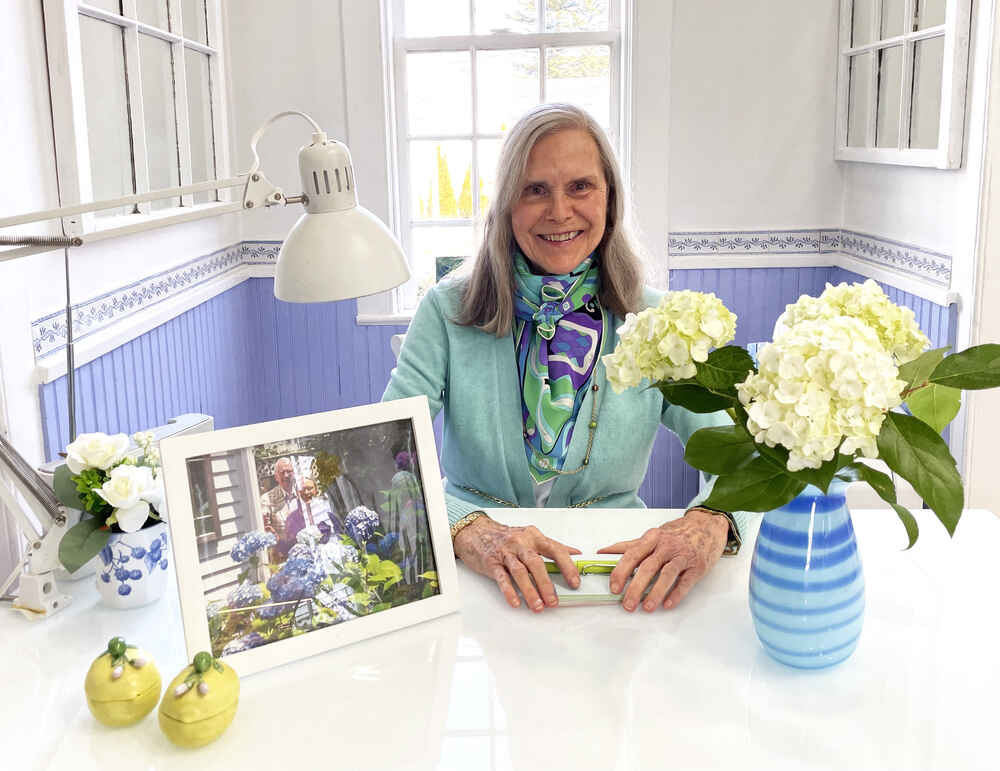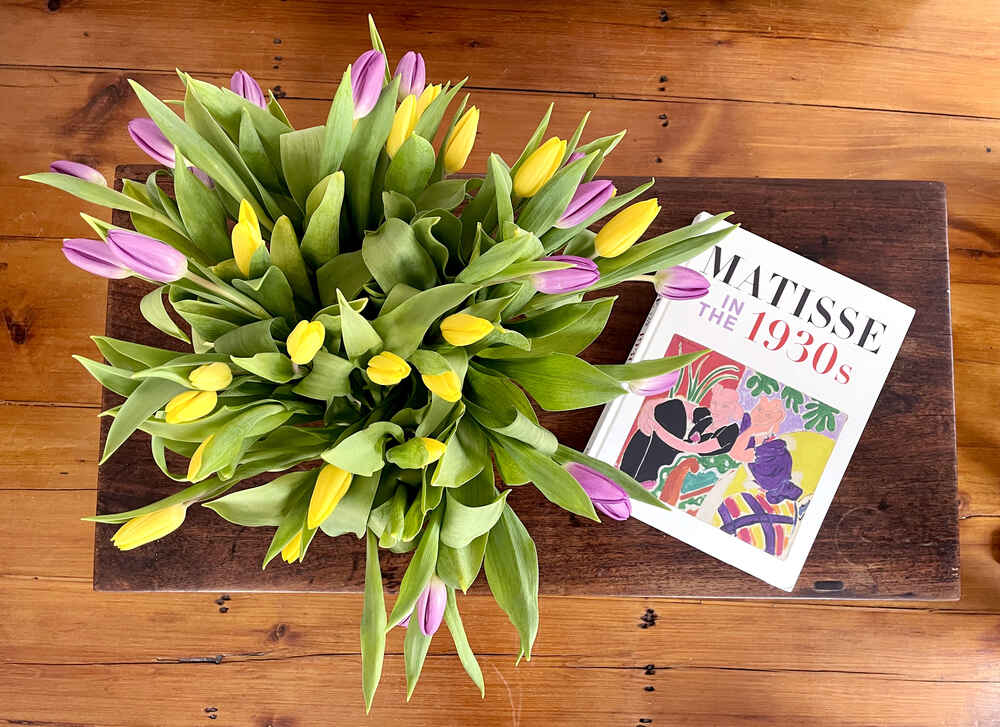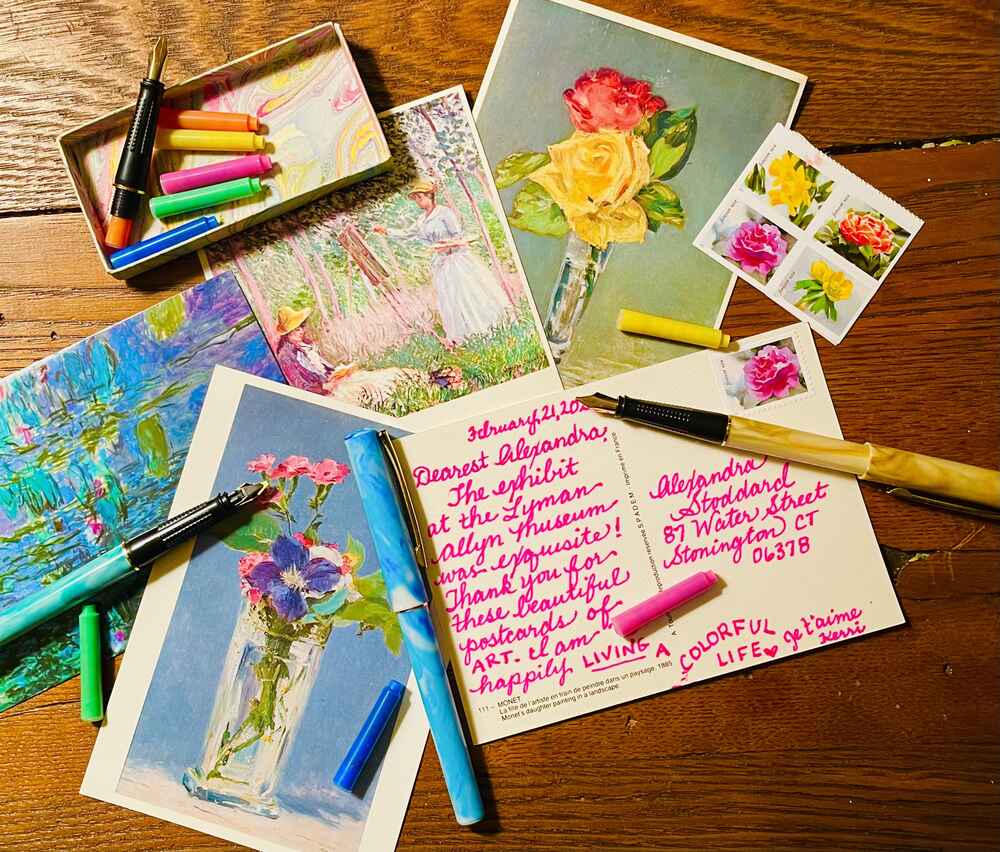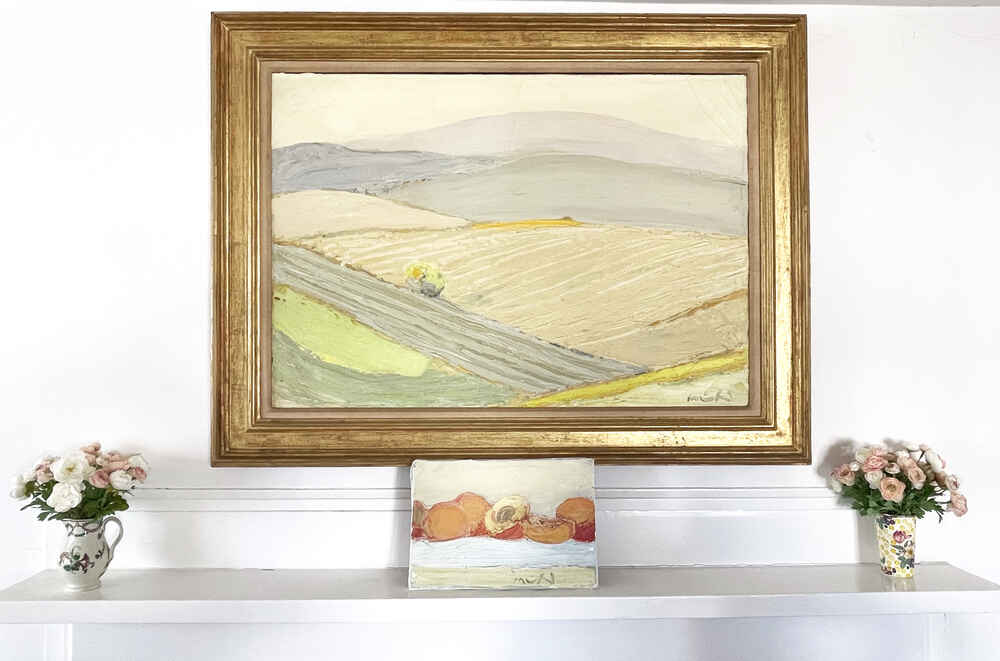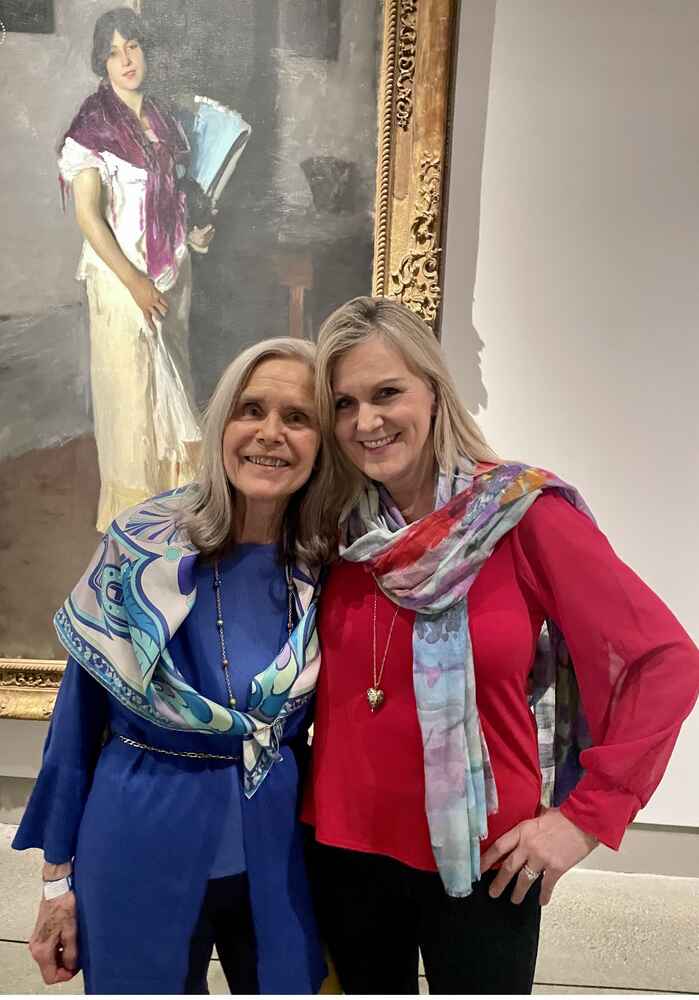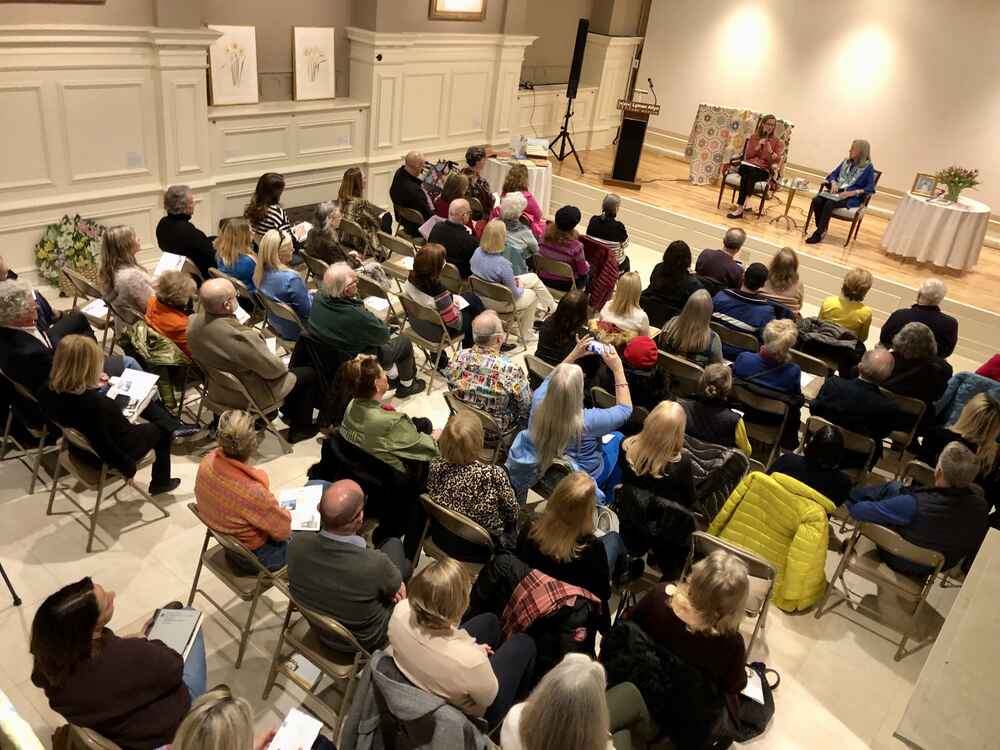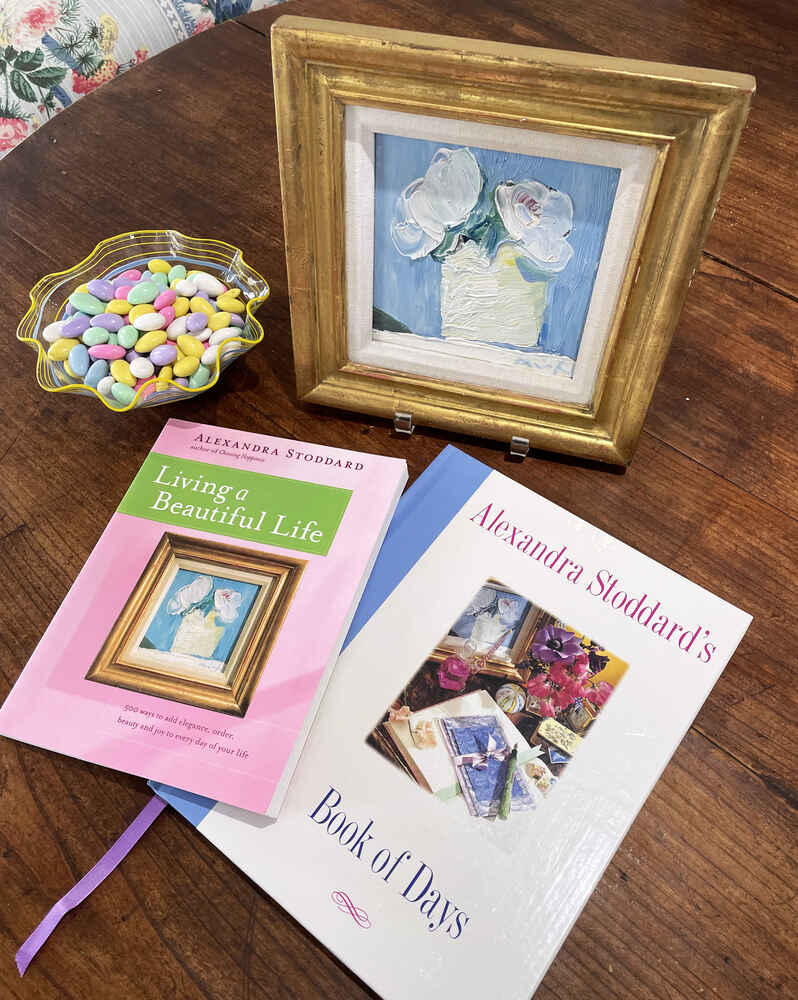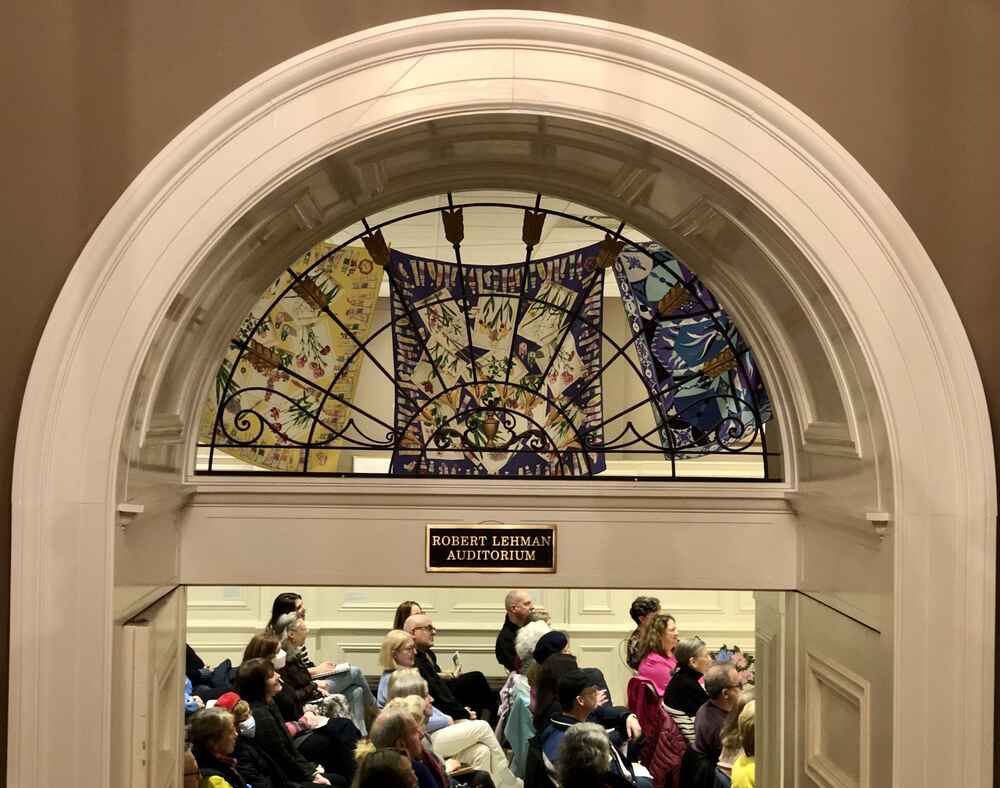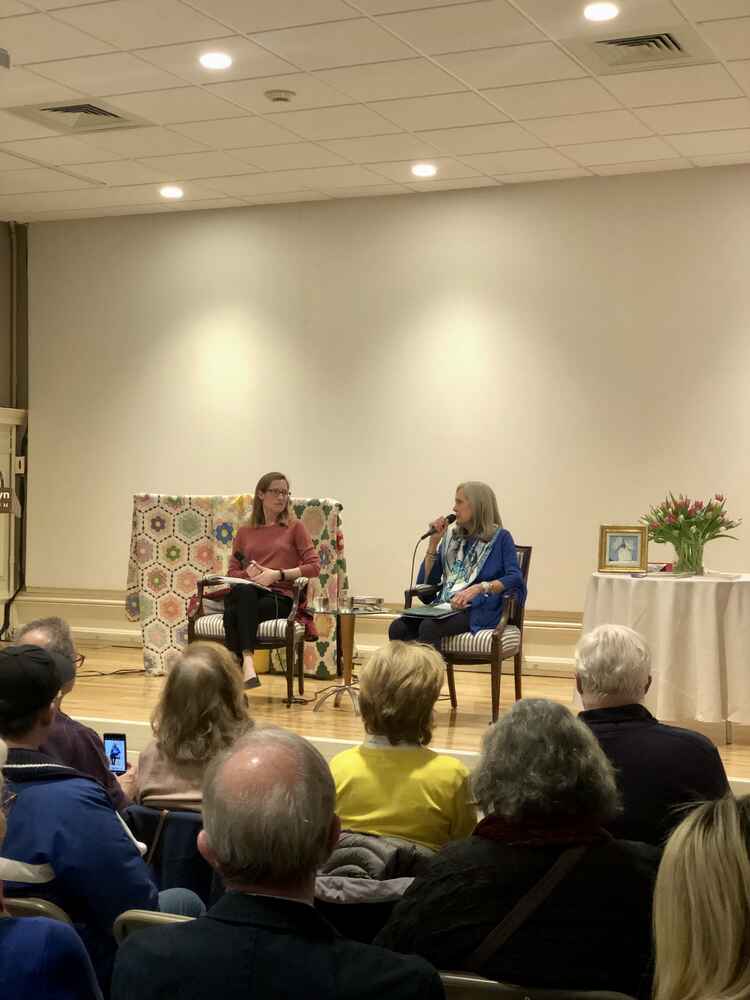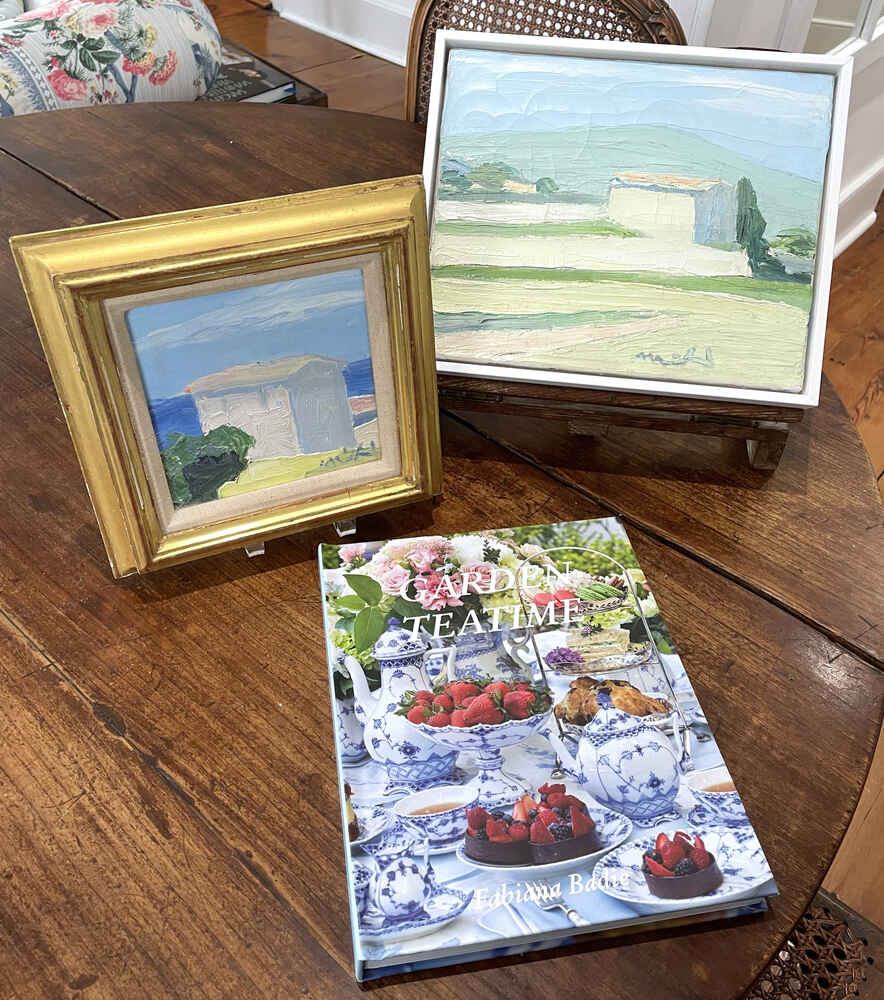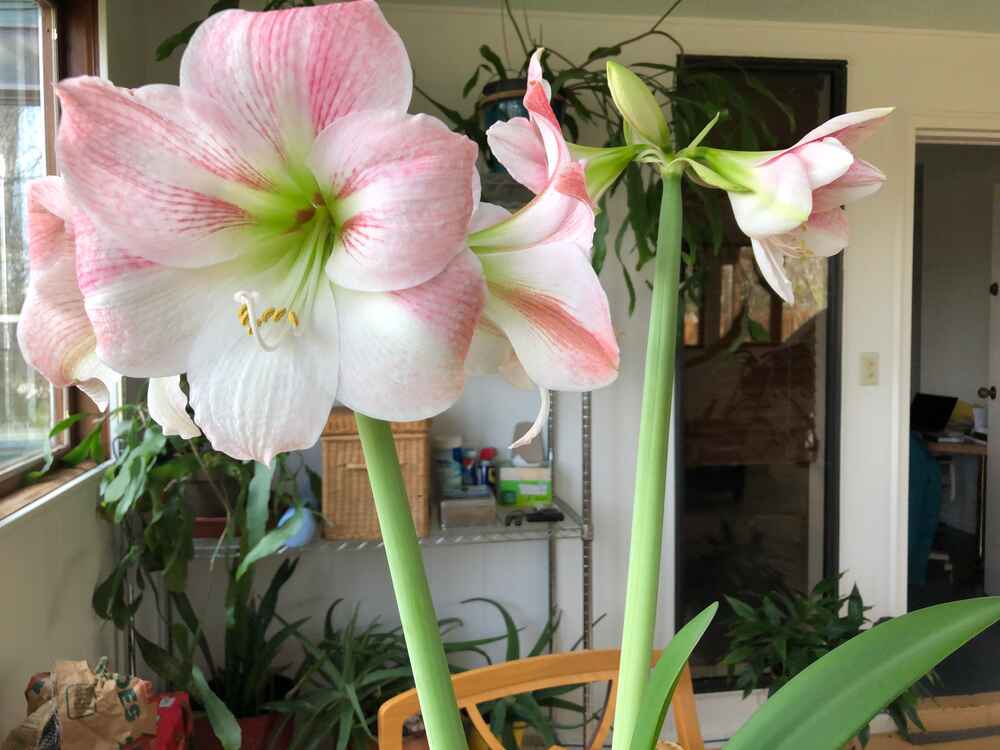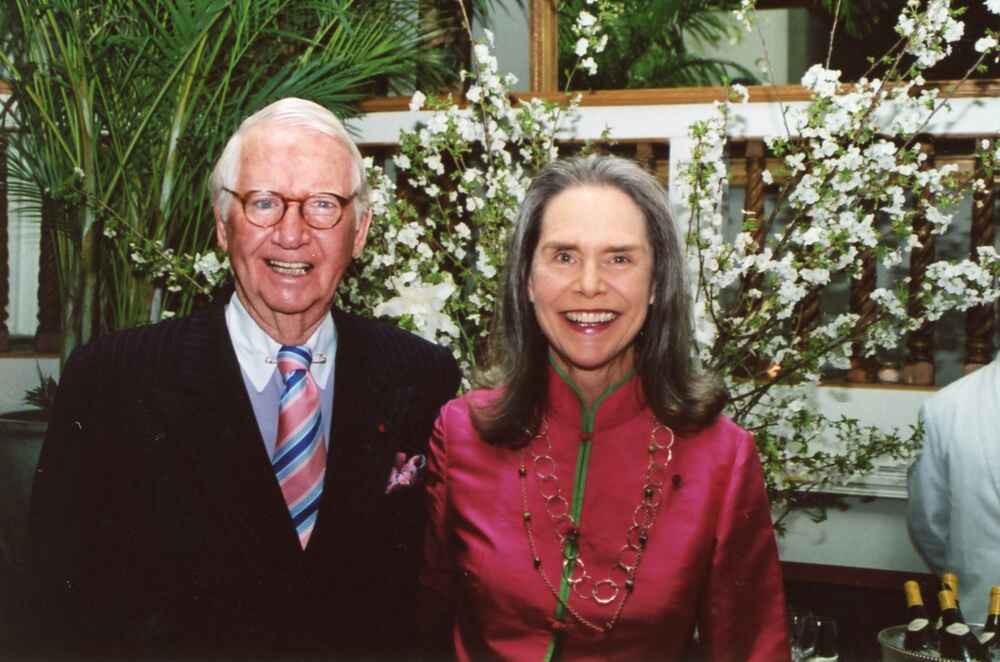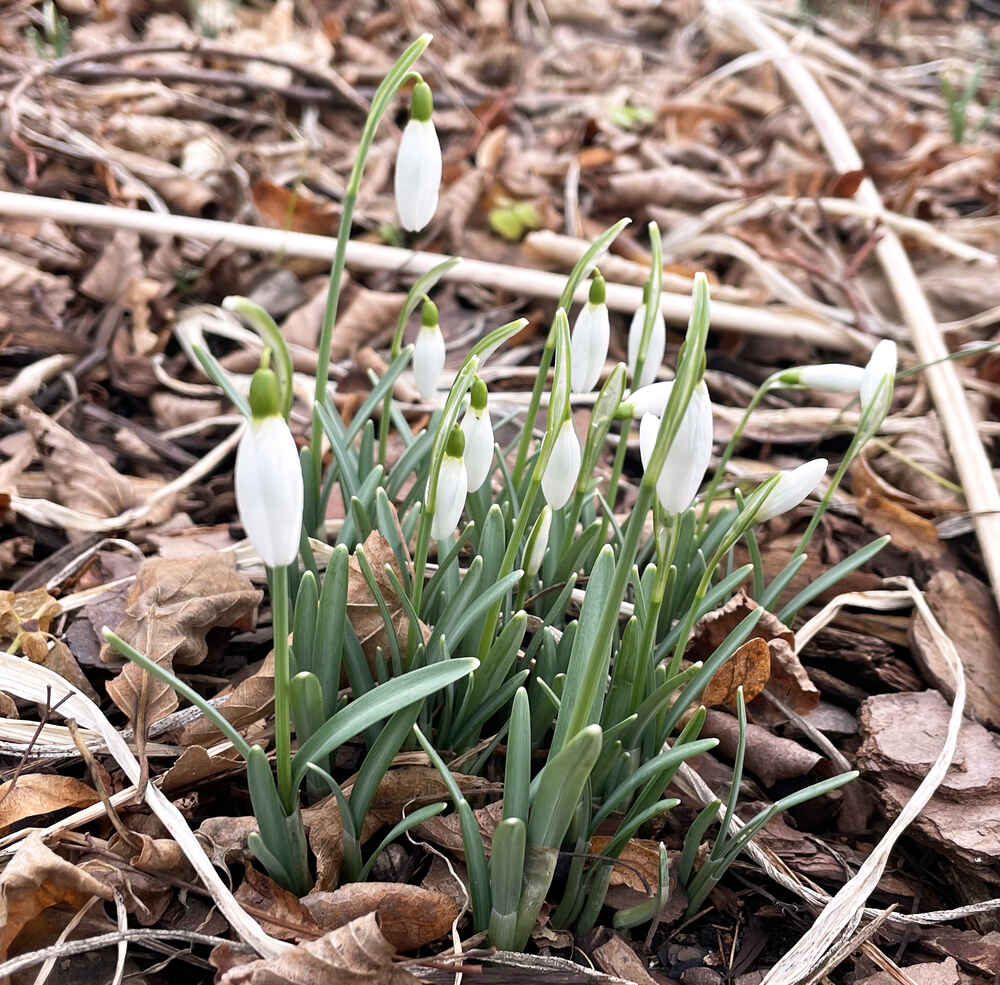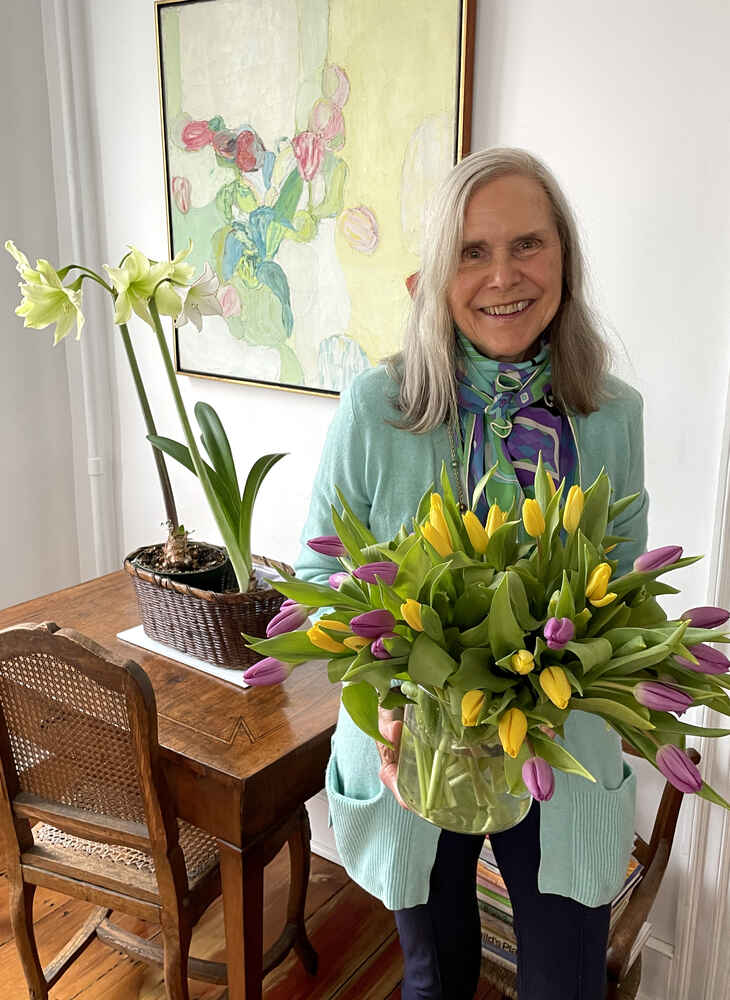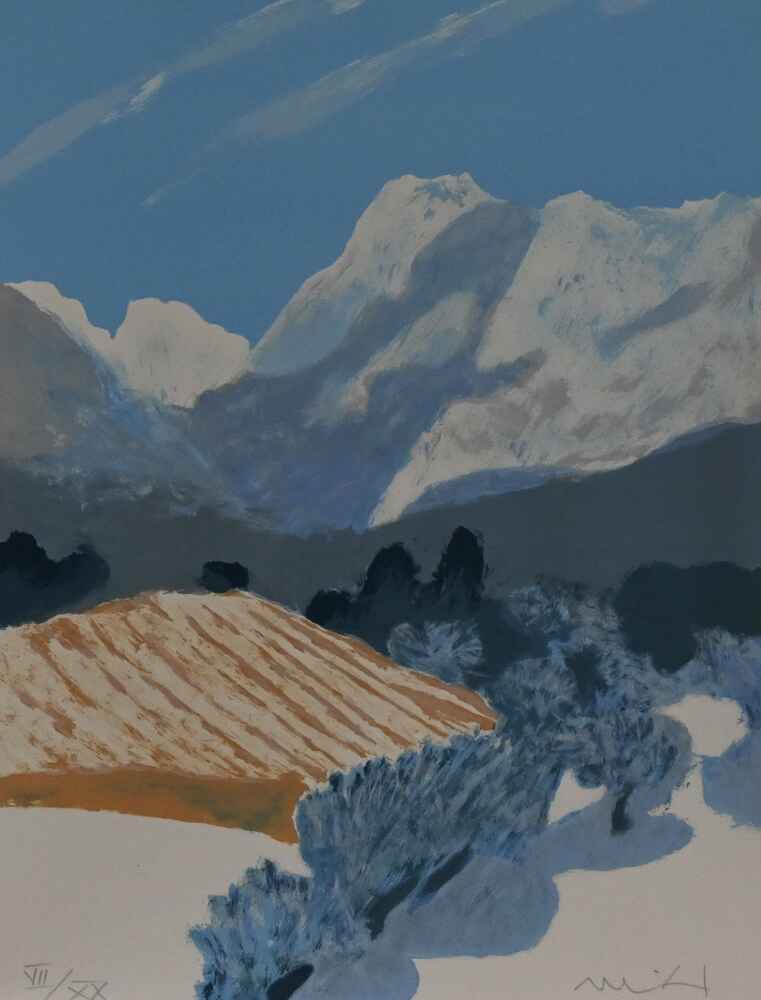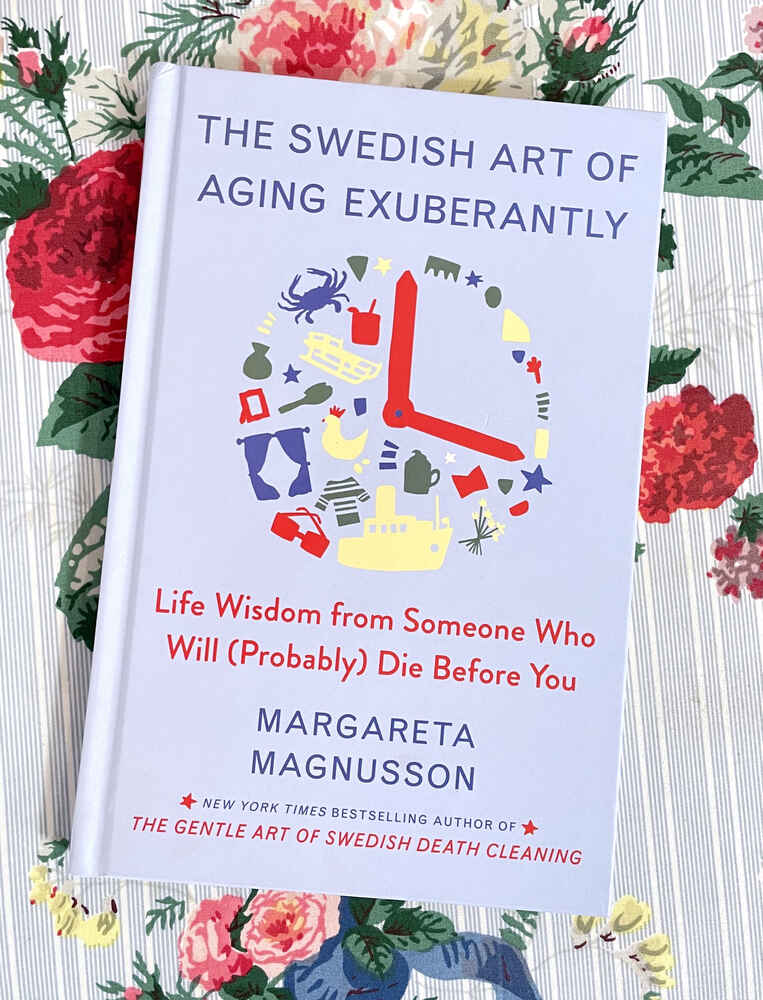AUTHOR | SPEAKER | PHILOSOPHER | DESIGNER
March 2023
“Eventually, my eyes were opened and I really understood nature. I learned to love at the same time.” —Claude Monet
Dear Friends,
I love you!
February, the month of love, has always been a time to celebrate our love for each other, and our love of life. Our shared humanity and cultural traditions, ceremonies and celebrations unite us by this sacred bond of love.
When we dwell in the consciousness of what is true, good and beautiful, we feel as though invisible forces are guiding us. I think of the great irony and mystery of the pop-up exhibition, “Alexandra Stoddard: A Colorful Life,” that came to me seemingly out of the blue. It happened only because I let go of my excess collections. I was writing “Empty and Be Full” as I was deaccessioning. I’d read, with great enthusiasm, The Gentle Art of Swedish Death Cleaning: How to Free Yourself and Your Family from a Lifetime of Clutter, by Margareta Magnusson. I unearthed hidden treasures. I woke up. By shedding an accumulated excess of material possessions, I illuminated the objects that feed my soul, are useful and are appropriate in my ninth decade.
When Peter and I left New York City, we underwent a powerful deaccessioning. Alexandra and Brooke took whatever they wanted. We originally thought we’d rent a small apartment, in order to keep a toe in the city that Peter had called home since he was five. We kept all our possessions that we envisioned would be appropriate in a smaller space, putting them in storage. “Out of sight, out of mind.”
A few carefree years flew by, and we shifted our attention to our new chapter. I’d closed down my interior design business, and Peter stopped practicing law. We devoted our energies full time to writing. The idea of having a domestic presence in the city faded the more we cherished our relaxed lifestyle in this beloved seaside walking village. Our New York storage was shipped to a local company. “I’ll think about it tomorrow” was our attitude of denial.
Gradually, it dawned on us that living in one place we love, a place we call home, is just right. We were free to visit New York as tourists. It felt quite liberating. We could enjoy traveling more while we were still able. When we greeted the movers in the street and looked in the gigantic van, Peter and I both had a moment of truth: Where on earth, in our fully decorated cottage, are we going to put all this stuff?
We weren’t going to put anything back in storage. Fortunately, a friend took all the chintz upholstered furniture from our city living room to give to another friend. One of the movers took the four-poster bed. When I was asked where to put the book boxes, antique furniture and the quilts, everything landed on “Three,” the attic. It wasn’t until last year, when I brutally attacked the decluttering project, with the help of my daughters and Cooper, that I paid attention to the neglected quilts.
I love quilts. In 1988, when I bought the cottage as a retreat from the city, we had quilts on walls, on the beds, folded on benches, stacked on chairs, on quilt racks and draped on furniture. During the 2008 renovation, they were put on “Three,” other than a few I kept on the banister rail upstairs. They never left.
The more I put things out in the universe, the more excited I’ve become. I’m unencumbered by material objects that were being stored, not used or appreciated properly. The best example I have is the dining room mantel. Under a large Roger Mühl painting of a sun-drenched field, I had five or six “baby” Mühls. I’ve recently given them to the Artioli Findlay gallery, who will sell them to other collectors who love his work as much as I do. The fact that other collectors treasure living with a painting that they, too, love connects us. One unframed painting of some peaches, resting on the ledge with space to breathe on either side, remains, peaceful and alive with Mühl’s joie de vivre.
Each object I was attracted to, drawn to spiritually as well as through my senses, has a time-specific story. Often I can vividly remember where I found the objects—when and how I was able to acquire them.
Mihaly Csikszentmihalyi, the author of Flow: The Psychology of Optimal Experience, understood that the objects we love and have close at hand “create permanence in the intimate life of a person.” By discerning what I can’t let go of, I’ve refined my collections. I’m able to fully savor a taste of things that speak to me and for me. My life is up to date with greater lightness of being.
This February proved to be quite magical. As Peter told me when he asked me to marry him almost half a century ago, “There will be many surprises.” The Lyman Allyn Art Museum in New London’s color exhibition, “Chromatopia,” opened the idea to have a pop-up exhibition in the auditorium of some of my colorful collections. It’s quite clear to me that this opportunity came at a perfect time in my life and was a joyful surprise.
When I look at the big picture of my life, I’m definitely a colorist. I was three when I became awake and aware in my mother’s cutting garden. Color became my language before I could read or write. My color inspirations come from nature, art and the beauty of light. We curate our intimate environments, where we eat, sleep and bathe, in order to live more beautiful lives.
Giving a talk about my love of art, with several of my paintings by the French artist I’ve been collecting since 1961, in a gem of an art museum in Connecticut, was thrilling. I feel profound gratitude for having experienced this heightened, extreme happiness. Rather than expressing my emotions in my words, I want to echo the feelings of Joseph Campbell. The legendary mythologist was asked a question by Bill Moyers in a final interview: whether he ever had a sense of “being helped by hidden hands.” Feel the passion of his immediate response.
All the time. It is miraculous. I even have a superstition that has grown on me as a result of invisible hands coming all the time—namely, that if you do follow your bliss, you put yourself on a kind of track that has been there all the while, waiting for you, and the life that you ought to be living is the one you are living somehow. And well, you can see it. You begin to deal with people who are in the field of your bliss, and they open doors to you. I say, follow your bliss, and don’t be afraid, and doors will open where you didn’t know they were going to be.
Meeting people who are in “your field of bliss,” who bring their unique stories to the depth of your relationship, opens doors to experiences we could never have encountered if we hadn’t met. Muriel is one of these rare friends. Just minutes after I told her about Joseph Campbell’s final interview, she shared an amazing coincidence, although neither of us believes in coincidences. These happenings come to us from the universal consciousness. Our task is to be open to life, to let go of our preconceived ideas and beliefs and pay attention to the fresh revelations we glean from our encounters. She had been leading a guided meditation with some friends recently, reading from a book by Thich Nhat Hahn, Zen and the Art of Saving the Planet. She opened the book randomly and began reading:
We can imagine there are many doors leading to happiness. Opening any of those doors, happiness will come to you in many different ways. But, if you are attached to one particular idea of happiness, it’s as though you have closed all the doors except one. And, because that particular door does not open, happiness cannot come to you. So, don’t close any door. Open all the doors. Don’t just commit yourself to one idea of happiness. Remove the idea of happiness you have, and happiness may come right away. The fact is that many of us are attached to a number of things we think are crucial to our well-being—a job, a person, a material possession, an ambition—it could be anything. Even though we suffer a lot because of it, we don’t have the courage to let it go. But the truth may be we continue to suffer precisely because of that. Each one of us has to look deeply and see this for ourselves. It needs great insight and courage to release our ideas of happiness. But, once we can do that, freedom and happiness can come very easily.
It was this wise Vietnamese Buddhist monk who taught us that the greatest gift we can give to others is our true presence. Only when we trust the universe, when we are unafraid to fully live our life, following our own interpretations of bliss, can we live exuberantly. This is precisely when we put ourselves on “a kind of track” that has been there all the while.
True presence is rare. In the reality of our daily lives, there are distractions in isolated monasteries as well as in the real world we live in now. Regular meditation is a great way to feel the present moments with greater clarity. We can silently ask for guidance. The key to the practice of meditation is to be receptive to the signs that will come to us when we are open to receiving them.
“If one truly loves nature, one finds beauty everywhere.” —Vincent van Gogh
The conversation Tanya and I had on February 12 at the Lyman Allyn Art Museum meant more to me than any talk I’ve ever given. We covered the themes of color, nature, beauty and art collecting. I never felt more at ease or excited as I did during this preciously limited window of time, in dialogue with this accomplished, talented art curator. The obvious reason I was so elated to have this once-in-a-lifetime opportunity to discuss my love of art and beauty is because it was an autobiography of my entire life’s journey.
From birth, throughout life’s different chapters until we die, our life is expressed through our actions. Excellence is a habit. In order to feel the sweet spot, when we are in a timeless flow of energy, in harmony with all the positive life-affirming, life-enriching joy of creating, we have to practice our craft. We learn by doing. We experiment. We dare to explore the unknown. We stretch the boundaries of what we know to discover these secret chambers in our soul. Nature is who we are, as human animals. Only when each one of us follows our God-given natural path can we follow our bliss. In order to be truly present, we must follow our soul’s code. Bliss is an invisible energy force from within.
Dr. Samuel Johnson understood that we’re never a hypocrite when it comes to our pleasures. We’re naturally drawn to what gives us delight. We’re fascinated by nature’s continuous, ever-changing gifts. We never look at nature’s beauty without feeling awe. When we open our eyes, we are awakening our soul’s longing. In brief flashes of transcendence, we feel an effervescence, an exalted radiance. We spontaneously feel the urge to redirect our energy. If only for a flash, we go into a state of ecstasy. We awaken, we know, we must always be true to this knowledge of our personal truths. Our continuing true presence is necessary to live in this spiritual joy, on this higher, more illuminating state of being.
It was exciting meeting people who had come from distances to meet me, to hear the talk and see the exhibition. A woman who bought a lithograph from my collection from the Artioli Findlay Gallery (and sent me a picture of it, framed) took a train from New York City. She wrote in the guest book that the experience was “truly a life-enhancing experience.”
Because of this pop-up, art lovers traveled from California, Canada, North Carolina, Massachusetts, New Hampshire, Rhode Island, New York and New Jersey, as well as all over Connecticut. Our talk was recorded, making it available to those of you who couldn’t be there, and it is available to watch here.
I’m still in awe. I feel I am living my best life possible. The stimulation of the February bliss is due largely to my belief in living beautifully, colorfully, happily every day. Toward the end of my talk, I quoted the words of Georges Clemenceau, “the Tiger of France,” a friend of Claude Monet and a World War I statesman who, for a while, had a modest position as art critic for a French paper. He had interviewed Matisse and discovered the two had a “greed” for learning. “Only the artists are on the right track, for it may be that only they can bring beauty into our lives: to give the world reason without artists is impossible.”
The Impressionists were seeking truth through beauty. Clemenceau characterized his friend Claude Monet as “the painter of light.” He reported Monet’s words: “I only looked at what the universe showed me, to bear witness to it with my paintbrush. Surely this is something.”
More than 60 years ago, I discovered my artist, Roger Mühl, my contemporary, living Impressionist, who believed that “to paint is to bring color to its maximum intensity so that it becomes vibration and light.”
In 1923, Robert Henri, the American artist and beloved art teacher, published a book, The Art Spirit. In his complete, uncontaminated devotion to art, he believed there is great happiness and wisdom in all the arts. The epigraph of The Art Spirit contains inspiring insights into how to devote our lives to creativity that is beautiful, pleasing to the eye and uplifts the human spirit. As he cultivated spontaneity as a teacher, bringing out native gifts, he taught his students artistic self-respect.
There are moments in our lives, there are moments in a day, when we seem to see beyond the usual. Such are the moments of our greatest happiness. Such are the moments of our greatest wisdom. If one could but recall his vision by some sort of sign. It was in this hope that the arts were invented. Sign-posts on the way to what may be. Sign-posts toward greater knowledge.
Let’s celebrate March with The Art Spirit. Support art museums. Discover your artist. Hang art in the rooms where you spend the most time. Collect art postcards in a photo box to train your eye.
To get my daughters excited about art museums, we used to play “The Postcard as Art.” Each girl would select several postcards from the museum gift shop and look for those pieces of art in the museum. Whoever found the original art would choose what we did for the rest of the day. Play this game with your children and grandchildren.
In closing on this high note of elation, I wish you great joy in the month of March. Alexandra is coming to visit, and we’ll celebrate her birthday. I’ll take down the pop-up exhibition and return my things to their rightful places in my beloved cottage.
Daffodil bulbs are already coming up. Charlie’s snowdrops are “friendlies” in my garden. We no longer have a picket fence to block the flow of our shared view.
With the war and the catastrophic tragedy of the earthquake, we are blessed to be able to be alive to spread our invisible wings and be useful in our own ways. Thank you for giving me so many of your gifts. I feel our connectedness, and this emotion is full of colorful, radiant light.
Love & Live Happy,

Great Day!
I’ll be appearing tomorrow on WFSB’s Great Day show with Scot Haney, where I will discuss curating my collections and passing on whatever no longer serves me. The show will air on Thursday, March 2, at 4 p.m.
(Update from Elissa: You can click here to watch the interview!)
I’m letting go of another lithograph by Roger Mühl if anyone is interested in adding it to their art collection; please contact Pauline at Artioli Findlay (artiolifindlay@gmail.com) for more information.
Roger Mühl (French, 1929 - 2008)
"Provence V, Au midi, là bas une barre de montagnes"
Limited edition French lithograph
16 3/8 x 12 1/2 inches
Executed / printed 1986
Edition VII / XX
This delightful Provence landscape has thyme and vineyards as well as expansive mountains in the distance.

